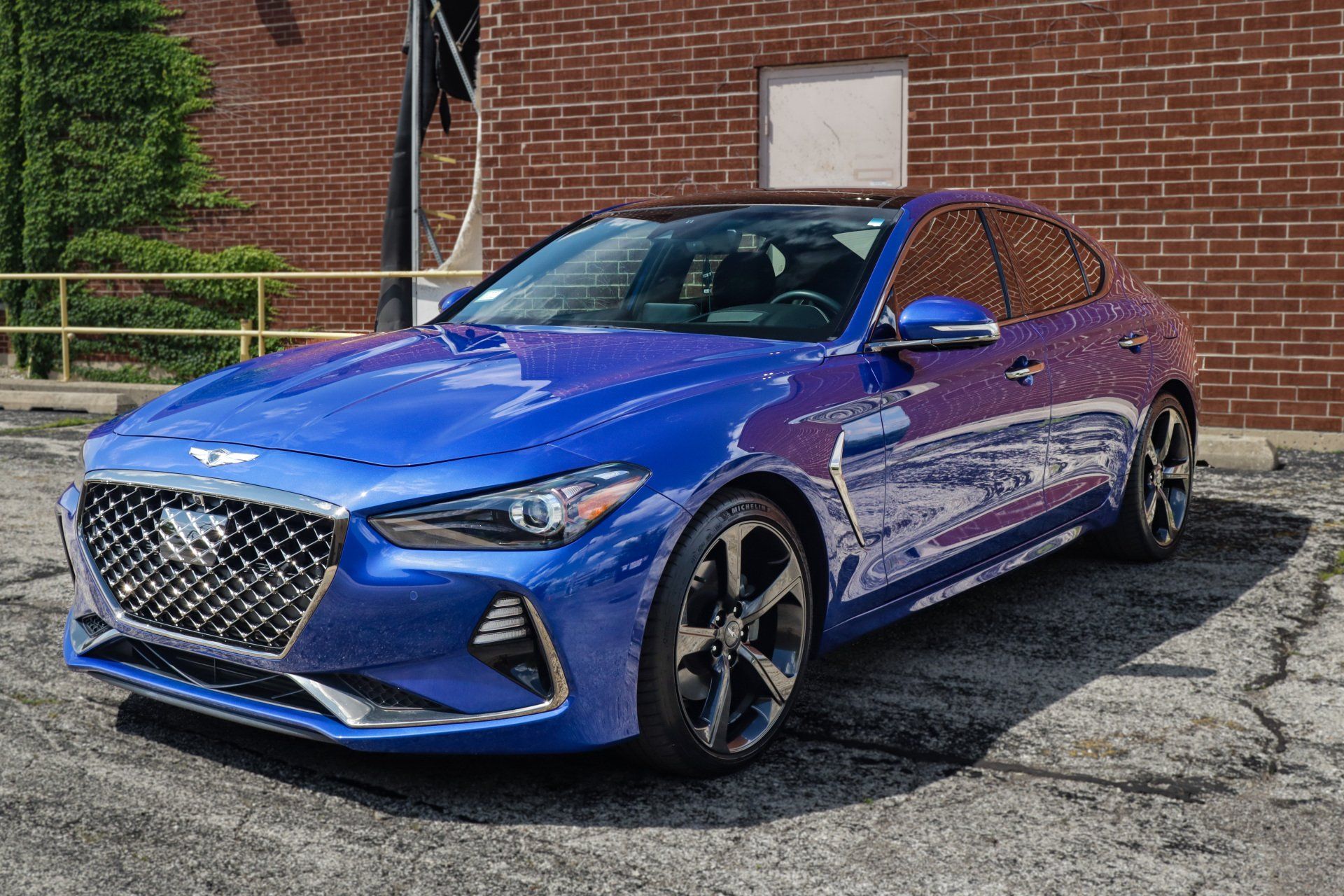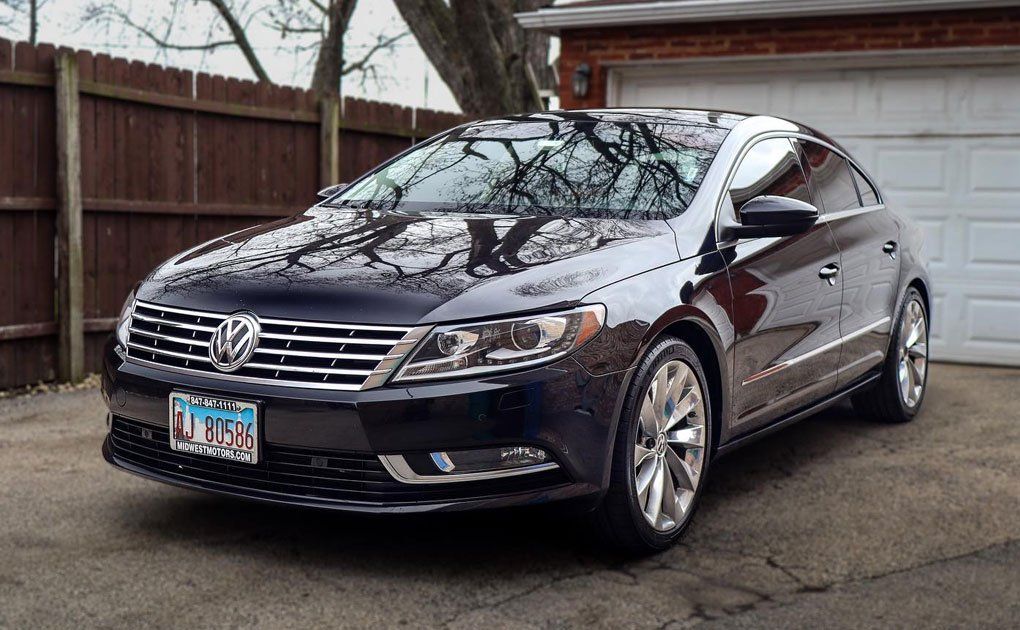Apply Coating on Top of PPF: Extra Protection for Your Vehicle
CALL (708) 574-8496
GET A FREE ESTIMATEWhen it comes to protecting your vehicle, the standard paint job just doesn’t cut it anymore. With elements like UV rays, dirt, and scratches lurking around every corner, many car owners are turning to Paint Protection Film (PPF) as their first line of defense. But what if I told you there's a way to amp up that protection even further? Enter ceramic coatings—an extra layer of security that not only wards off damage but also keeps your ride looking shiny and new. In this article, we’ll explore how combining coatings with PPF can provide the ultimate shield for your car, transforming it into a resilient beauty on the road.
Yes, you can apply ceramic coatings on top of Paint Protection Film (PPF) for additional protection against UV damage while also aiding in easier cleaning. This combination effectively enhances the durability and appearance of your vehicle, making it a popular choice among car enthusiasts.
Why Consider Adding Coating on Top of PPF?
One notable benefit of applying a coating over Paint Protection Film (PPF) is the enhanced durability it brings. Coatings can increase the lifespan of PPF by up to 50%, offering additional resistance to environmental damage like fading due to UV exposure. In essence, when you coat your PPF, you're likely extending its life significantly, which can save you on future replacement costs. It’s like giving your car an extra layer of armor against potentially damaging elements.
Additionally, the hydrophobic properties of these coatings are quite remarkable. When water encounters the coated surface, it beads up and rolls off with ease, significantly reducing the contact time with dirt and grime. Research has shown that coatings can reduce water interaction by up to 80%. As a result, you may find that your washing routine becomes quicker and less frequent—less labor for you, while keeping your vehicle looking pristine. The icing on the cake is the protective shield these coatings provide against acidic contaminants like bird droppings and tree sap, which can wreak havoc on your paintwork if left unchecked. Coatings can offer up to 90% resistance against these common automotive nuisances.
Additionally, let's not overlook the aesthetic improvements that come from adding a coating. Coatings can enhance the gloss level of your PPF by around 30%, resulting in a stunning shine that catches the light beautifully. A well-maintained car often radiates pride and care—qualities that resonate with both owners and passersby alike. Imagine taking your vehicle out after having added a ceramic coating; the gleam from the paintwork could astound even those who might have been indifferent previously.
Finally, some advanced formulations include self-healing properties that allow minor scratches to disappear within 24 hours when exposed to heat. This feature adds an additional layer of convenience since it minimizes the risk of permanent blemishes and keeps your car looking fresh without extensive effort. Exploring these features reveals crucial insights into optimizing your vehicle's protection strategy. Up next, we take a closer look at the distinctive varieties of coatings available to enhance PPF further.
Types of Coatings for PPF
- Ceramic Coatings: Among the most popular choices, ceramic coatings have gained a loyal following thanks to their robust durability and impressive hydrophobic effects. Think of them as the elite bodyguards of your vehicle’s paint; they create a hard, glass-like layer that repels water, dirt, and other pollutants that can dull the appearance of your car. Not only does this coating make your vehicle easier to clean—less scrubbing means less risk of damaging the underlying PPF—but it also amplifies the glossiness of your car’s finish, making it pop with a vibrant sheen. Furthermore, ceramic coatings provide an added layer of chemical resistance that standard PPF doesn’t offer. This means harsh chemicals or environmental factors—like bird droppings or tree sap—won't penetrate through to damage your paint underneath. The long-term savings in maintenance and potential repair costs often justify the initial investment in a high-quality ceramic coating.
- Graphene Coatings: Now let’s shift our focus to graphene coatings, which are relatively newer but burst onto the scene with impressive credentials. They offer similar hydrophobic properties as ceramic coatings, but many users report that they outperform ceramics in terms of protection. What makes graphene particularly intriguing is its ability to dissipate heat from the surface effectively; cooler surfaces equate to fewer water spots forming after rain or washing, ultimately maintaining that sleek look for longer periods. Additionally, reduced exposure to heat minimizes paint fading—a critical consideration for car enthusiasts who cherish aesthetics along with functionality. When integrating graphene into your vehicle care routine, you’re opting for a cutting-edge solution designed for longevity and peak performance.
- Polymer-Based Sealants: With ceramic and graphene options in mind, it's worth considering another viable alternative: polymer-based sealants. While these sealants might not be as durable or advanced as their ceramic or graphene counterparts, they serve as an excellent entry point for those who want effective protection without breaking the bank. Polymer-based sealants are typically easier to apply and require less specialized knowledge compared to applying more complicated coatings.
By weighing these options carefully—ceramic coatings for advanced durability and aesthetics, graphene for innovative thermal management, or polymer sealants for budget-friendly beginners—you can undoubtedly optimize the protective capabilities of your PPF while ensuring your vehicle remains in pristine condition. Understanding these different types of coatings lays the groundwork for assessing their respective advantages and drawbacks, setting the stage for a deeper examination of all these protective solutions.
Pros and Cons of Coating on PPF
Starting with the pros, one of the most significant advantages of adding a coating to your PPF is its enhanced durability. When installed correctly, coatings can extend the life of the PPF by up to 50%. This means your protective film not only shields against environmental damage but can also last longer before requiring a replacement. In my experience, this durability offers peace of mind, especially for owners of high-end vehicles who place a premium on aesthetics and value.
Furthermore, coatings provide remarkable UV protection. They can block up to 99% of harmful UV rays that would otherwise contribute to paint fading. Considering how damaging exposure to sunlight can be—especially for colors like black or red—this additional layer is invaluable. Beyond UV protection, these coatings enhance the hydrophobic properties of the PPF, meaning your vehicle will repel water more effectively. This improved water repellency leads to easier cleaning and keeps pesky water spots at bay. If you've ever spent an afternoon scrubbing away at stubborn spots, you know how welcome this feature can be.
While there are many compelling reasons to apply a coating, there are cons that demand attention as well. First up is the cost. The application of a quality coating can add 20-30% to the overall price of your PPF installation. For budget-conscious car enthusiasts, this added expense may weigh heavily in their decision-making process. Then there's the application complexity. Unlike some DIY ceramic coatings that you might feel comfortable tackling yourself, achieving optimal results with PPF coatings usually requires professional expertise. If not applied correctly, you risk voiding the warranty on your PPF altogether—a gamble no car owner wants to take.
Moreover, while both options require maintenance, coatings often necessitate periodic care involving specific cleaning products to retain their effectiveness. Many assume they can just "set and forget," but that's a common misconception when dealing with coatings. Ultimately, you might find yourself tied to a maintenance schedule more rigorous than initially expected.
It's essential to weigh these factors carefully; understanding the compatibility issues between different types of coatings and PPF is crucial too. Not all coatings work seamlessly with every brand or type of PPF, which can lead to frustration if you're not aware ahead of time. Ensuring that you choose compatible products maximizes protection and avoids aesthetic inconsistencies. As you navigate these considerations, you'll also want to explore effective methodologies for applying these coatings.
Application Techniques for Coatings
The method in which you apply a coating over Paint Protection Film (PPF) is crucial to achieving optimal results. Applying the coating uniformly ensures durability and enhances the protective properties of the PPF underneath. While professional help often leads to superior outcomes, do-it-yourself enthusiasts can also achieve impressive results if they follow the right steps.
Professional vs. DIY Application
Seeking a professional installation is generally advisable, especially if you're unsure about the process. Professionals have access to specialized tools and techniques designed to provide a flawless finish while reducing the possibility of errors during application. They understand different coatings’ intricacies, which helps them avoid pitfalls that could diminish your vehicle's protection. Their expertise allows them to navigate varying surface conditions, ensuring that each layer adheres properly without complications. Hiring an expert means investing in quality, which translates to peace of mind knowing your vehicle is receiving top-notch care. However, many car owners enjoy the satisfaction of doing things themselves.
DIY Application
If you are leaning towards applying a coating on your own, it's essential to approach this task with care and precision. Here’s a narrative guide based on personal insights learned over years spent exploring vehicle maintenance:
Before you start, make sure to clean the underlying PPF thoroughly. Use a pH-neutral car shampoo along with a microfiber cloth to remove dirt, oils, and contaminants from the surface. This step is vital because any residue left behind can lead to poor adhesion of the coating. Furthermore, applying in an environment where the temperature ranges between 60°F and 80°F (15°C-27°C) promotes better adhesion and curing.
Now you’re ready to begin applying the coating. Utilize a microfiber applicator pad when applying your chosen product for a smoother finish. Divide the vehicle into smaller sections to ensure you don’t miss spots while keeping track of where you’ve worked. Remember: consistency is key; apply thin and even layers to avoid streaks and unevenness. After allowing the coating some time—following the manufacturer's guidance for curing—you should buff the surface using another clean microfiber towel. Buffing not only smooths imperfections but also enhances that eye-catching shine we're all after. As an additional tip, take this moment for a final inspection; look closely for any missed areas or inconsistencies. If anything doesn’t appear up to standard, don’t hesitate to reapply in those specific locations until it meets your satisfaction.
By taking careful measures during application—whether done professionally or by yourself—you lay down robust protection against wear and tear on your vehicle's surface. Now let's explore strategies for maintaining that freshly coated PPF.
Maintenance Tips for Coated PPF
Once you've taken the time to coat your Paint Protection Film (PPF), establishing a consistent maintenance routine is key. Regular washing helps remove contaminants that can wear down both the PPF and the protective coating. Aim to wash your vehicle every two weeks with a pH-balanced car wash soap. This gentle solution will cleanse without stripping away any of the important protective layers you’ve added. Just like watering a plant keeps it healthy, regular washing keeps your car's finish vibrant and protected.
Best Practices for Maintaining Your Coating
However, there are certain practices to adopt to maintain that freshly coated look:
- Check for Damage: Inspect your coating monthly. This involves a simple visual evaluation of the film, keeping an eye out for scratches or signs of wear. Use a microfiber cloth to wipe off any spots, as it’s soft enough not to scratch surfaces.
- Reapply Protectant: Every six months, consider applying a maintenance spray or booster designed for coated surfaces. This enhances hydrophobic properties and provides an extra layer of shine while aiding in water bead formation.
- Avoid Harsh Chemicals: Always steer clear of acidic or abrasive cleaners, which can compromise both coatings and PPF. Keeping it simple is often best; stick with proven safe products for your vehicle’s surface.
By following these tips diligently, you're ensuring longevity for both the PPF and the coating itself. Regular attention is akin to giving your vehicle a spa day; it may seem trivial at first, but it makes all the difference when that pristine finish shines back at you.
A dedicated microfiber towel isn’t just a recommendation—it’s a necessity for drying after washing. It minimizes the risk of scratches and helps prevent annoying water spots from forming on your newly treated surface. Taking these small steps daily can lead to significant benefits over time while keeping your car investment looking good as new. As we explore further, understanding professional insights will equip you with the necessary knowledge when seeking top-notch installations and services for your vehicle.
Expert Recommendations for Installers
When installing coatings over Paint Protection Film (PPF), getting guidance from industry experts can make a significant difference in both application and longevity. Properly chosen and applied coatings enhance not just the appearance but also the durability of your vehicle's surface.
Professionals often recommend researching products from reputable brands known for their compatibility with PPF. This reduces the likelihood of adverse reactions, ensuring that your protective layer remains intact and effective over time. Moreover, maintaining a clean and dust-free environment during application is critical. Protecting your vehicle from unwanted particles is key to achieving a smooth finish that enhances both aesthetics and performance. A typical garage setup isn't always ideal, so investing time to prepare an optimal workspace pays off significantly. To mitigate risks, many installers suggest using plastic sheeting or even portable spray booths to limit exposure to dust and other contaminants.
Pre-Application Inspection
Before applying any coating over PPF, take a moment for a thorough inspection of both the film and the underlying surface. Ensure that there are no imperfections—like bubbles—in the PPF itself; otherwise, these flaws will be magnified through the coating. If necessary, perform touch-ups or corrections prior to application to secure a flawless outcome.
Finally, let’s not overlook the importance of proper curing times for each product used. Follow specific guidelines provided by the manufacturer for drying and curing; this step cannot be rushed if you want lasting protection. Certain coatings may require longer drying times in varying temperatures and humidity levels, so patience here pays dividends.
By adhering to these expert recommendations—focusing on quality products, maintaining cleanliness, and conducting thorough inspections—you set yourself up for success while maximizing efficiency and performance in your investment in PPF technology. With diligence in preparation and proper care throughout application, you can ensure your vehicle receives optimal protection that lasts.
Unmatched Protection for Your Vehicle in Carol Stream, IL
Give your car the protection it deserves with D’Andrea Auto Detailing’s premium ceramic coating and paint protection film (PPF) services in Carol Stream, IL. Our expert team applies industry-leading coatings that shield your vehicle from harsh weather, road debris, and everyday wear, ensuring long-lasting shine and durability. With precision-installed PPF, your paint stays flawless while maintaining a factory-fresh look. Trust D’Andrea Auto Detailing for top-tier protection that keeps your vehicle looking its best for years to come. Schedule your appointment today!
D’Andrea Auto Detailing was founded in 2021, setting out to be part of the solution to the obstacle of achieving automotive protection and perfection in the often messy Midwest city of Carol Stream, Illinois. We provide two types of high-quality vehicle paint protection services - Undrdog Ceramic Coatings and XPEL Paint Protection Films - alongside individual interior rejuvenation and exterior decontamination services. We aim to help both top-tier sports cars and daily drivers always look their best and operate even better!
Quick Links
Hours of Operation
Monday-Friday: 8:00 AM - 5:00 PM
Saturday - Sunday: Closed
This website was designed by the team at
Detailers Roadmap, a platform developed for detailing operators across the globe.
All Rights Reserved | 8bitcreative, LLC | D’Andrea Auto Detailing





